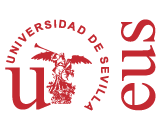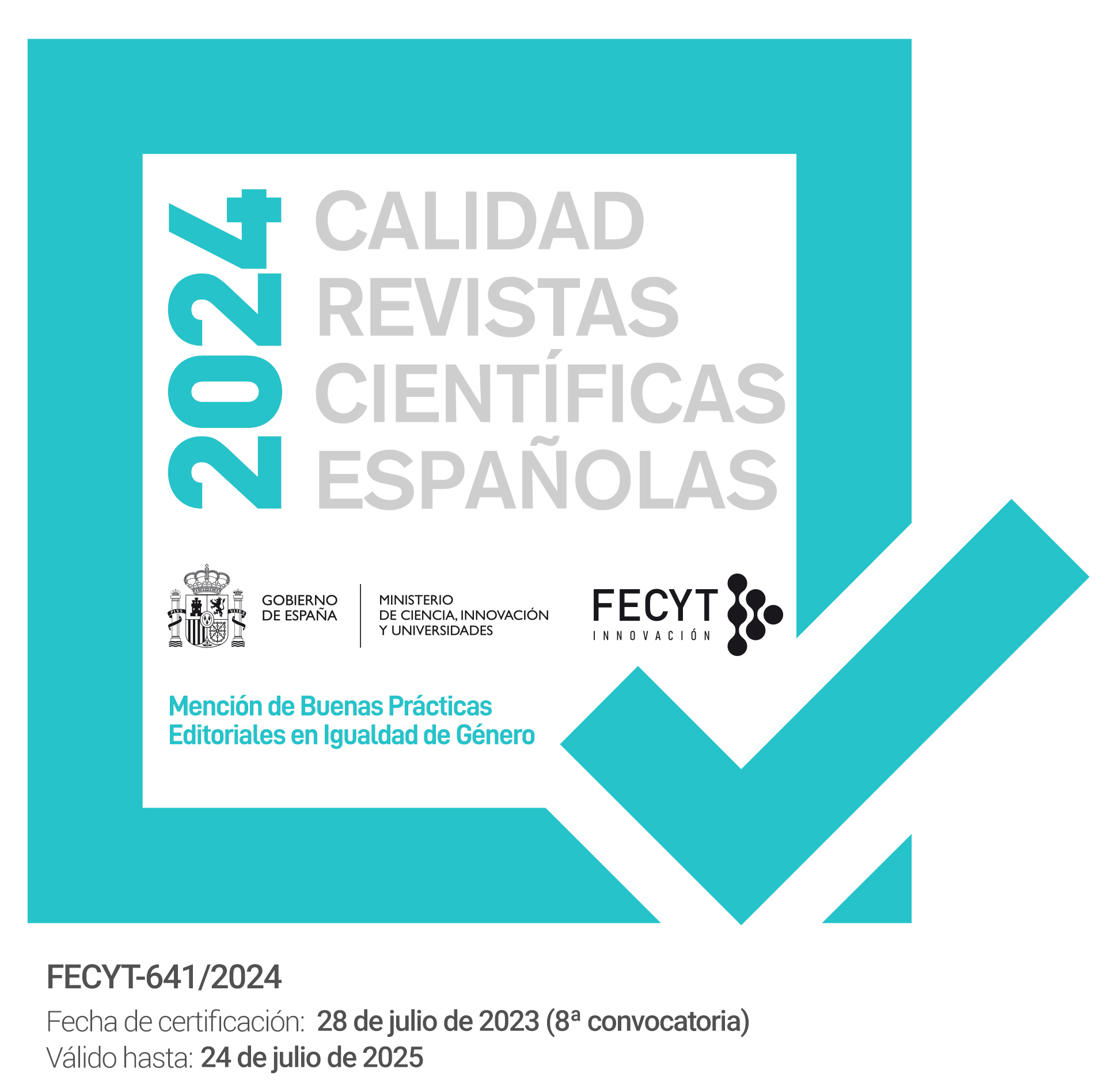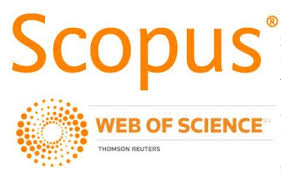Tourism in Huelva throughout the Urban Linguistic Landscape
DOI:
https://doi.org/10.12795/PH.2024.v38.i01.04Keywords:
Linguistic Landscape, sociolinguistics, top-down linguistic landscape, linguistics of tourism, linguistic ethnovitalityAbstract
The region of Huelva has a particular socio-demographic characterization. As it has extensive coastal lands, it receives a significant number of tourists every year. Also, the province’s economic dedication to export agriculture means a constant migratory flow from Eastern European and African countries. The institutions are aware of this and, therefore, they design their communication with these segments of the population through the signs they emit and incorporate into the urban linguistic landscape of Huelva. In this study we quantify, classify, and analyze the top-down linguistic landscape to know the type of communication established by the institutions and to evaluate the situation of multilingualism that it generates in the cities of Huelva. Our results point to a greater interest on the part of the institutions rather in the tourist population and the economic repercussion of their leisure activities than in the migrant population and their needs for understanding administrative messages and messages of general interest.
Downloads
Referencias bibliográficas
Ariolfo, R. y Mariottini, L. (2022). El español en el paisaje lingüístico italiano. Contexto, metodología y análisis de datos. En M. De la Torre García y F. Molina Díaz (Eds.), Paisaje lingüístico: Cambio, intercambio y métodos (pp. 13-40). Peter Lang.
Aznar Sánchez, J. Á., Belmonte Ureña, L. J. y Bonillo Muñoz, D. (Eds.). (2015). Mercado de trabajo y población extranjera en Almería. El sector en la agricultura intensiva. Universidad de Almería.
Backhaus, P. (2006a). Multilingualism in Tokyo: A Look into the Linguistic Landscape. En D. Gorter (Ed.), Linguistic Landscape: New approach to multilingualism (pp. 52-66). Multilingual Matters. https://doi.org/10.21832/9781853599170-004
Backhaus, P. (2006b). Signs of Multilingualism in Tokyo: A Linguistic Landscape Approach. Multilingual Matters.
Barni, M. y Extra, G. (Eds.). (2008). Mapping Linguistic Diversity in Multicultural Contexts. De Gruyter Mouton. https://doi.org/10.1515/9783110207347
Ben-Rafael, E., Shohamy, E., Amara, M. H. y Trumper-Hecht, N. (2006). Linguistic Landscape as Symbolic Construction of the Public Space: The Case of Israel. En D. Gorter (Ed.), Linguistic landscape: A New approach to multilingualism (pp. 7-30). Multilingual Matters. https://doi.org/10.21832/9781853599170-002
Calvi, M. V. (2018). Paisajes lingüísticos hispánicos: Panorama de estudios y nuevas perspectivas. LynX. Panorámica de Estudios Lingüísticos, (17), 5-60.
Castillo Lluch, M. y Sáez Rivera, D. M. (2011). Introducción al paisaje lingüístico de Madrid. Lengua y Migración / Language and Migration, 3(1), 73-88.
Cenoz, J., y Gorter, D. (2009). Language Economy and Linguistic Landscape. En E. Shohamy y D. Gorter (Eds.), Linguistic Landscape – Expanding the Scenery (pp. 55-69). Routledge.
Diputación Provincial de Huelva. (s. f.). Detalles estadísticos de municipios. https://www.diphuelva.es/servicios/municipios/
Esteba Ramos, D. (2014). Aproximación al paisaje lingüístico de Málaga: Préstamos y reflejos de una realidad lingüística plural. reCHERches, (12), 165-187. https://doi.org/10.4000/cher.7340
Esteba Ramos, D. (2018). Paisaje lingüístico turístico y residencial en el Mediterráneo español: Patrones y usos lingüísticos en Nerja. En E. Ortega Arjonilla (Ed.), El paisaje: Percepciones interdisciplinares desde las humanidades (pp. 193-202). Editorial Comares.
Fernández Juncal, M. del C. (2020a). El paisaje lingüístico de un área rural: Frontera, transición y contacto. Bulletin of Hispanic Studies, 97(4), 325-347. https://doi.org/10.3828/bhs.2020.19
Fernández Juncal, M. del C. (2020b). El paisaje lingüístico de un área urbana de transición del español y el vasco: identidades y símbolos. Bulletin Hispanique, (122-1), 325-344. https://doi.org/10.4000/bulletinhispanique.10906
Fernández Juncal, M. del C. (2020c). La estratificación social del paisaje lingüístico de Bilbao. Revista Internacional de Lingüística Iberoamericana, (35), 117-142. https://doi.org/10.31819/rili-2020-183509
Franco Rodríguez, J. M. (2009). Interpreting the Linguistic Traits of Linguistic Landscapes as Ethnolinguistic Vitality: Methodological Approach. RAEL: revista electrónica de lingüística aplicada, 8(1), 1-15.
Galloso Camacho, M. V. (2022). Primeras observaciones sobre el paisaje lingüístico de Huelva capital. En L. Mariottini y M. Palmerini (Eds.), Estudios de lingüística hispánica. Teorías, datos, contextos y aplicaciones: Una introducción crítica (pp. 977-1004). Dykinson.
Gorter, D. (Ed.). (2006). Linguistic landscape: New approach to multilingualism. Multilingual Matters. https://doi.org/10.21832/9781853599170
Heredia Mantis, M. (2023a). El Paisaje Lingüístico como situación comunicativa y sus aplicaciones didácticas. En M. V. Galloso Camacho, M. Cabello Pino y M. Heredia Mantis (Eds.), Funciones y aplicación didáctica del Paisaje Lingüístico andaluz (pp. 197-229). Iberoamericana Vervuert. https://doi.org/10.31819/9783968693569-010
Heredia Mantis, M. (2023b). El Paisaje Lingüístico de Huelva: Un estudio de caso en los municipios costeros. Verba. Anexo 85: Andalucía en su paisaje lingüístico: lenguas, signos y hablantes, 119-146. https://doi.org/10.15304/9788419679925
Hernández Ramírez, J. (2017). Turismo de base local y gobernanza en la frontera. Etnografía de dos villas del Bajo Guadiana. Gazeta de Antropología, 33(1). https://doi.org/10.30827/Digibug.44465
Instituto de Estadística y Cartografía de Andalucía. (s. f.). Encuesta de Coyuntura Turística de Andalucía. Junta de Andalucía. https://www.juntadeandalucia.es/institutodeestadisticaycartografia/turismo/index.htm
Instituto Nacional de Estadística. (s. f. a). Flujo de inmigración procedente del extranjero por provincia, año y país de nacimiento. https://ine.es/dyngs/INEbase/es/operacion.htm?c=Estadistica_C&cid=1254736177000&menu=resultados&idp=1254735573002
Instituto Nacional de Estadística. (s. f. b). Estadística continua de la población, Resultados por provincias, Población residente por fecha, sexo, nacionalidad (agrupación de países) y lugar de nacimiento (agrupación de países). https://ine.es/dyngs/INEbase/es/operacion.htm?c=Estadistica_C&cid=1254736177095&menu=resultados&idp=1254735572981
Instituto Nacional de Estadística. (s. f. c.). Cifras oficiales de población de los municipios españoles en aplicación de la Ley de Bases del Régimen Local. https://www.ine.es/jaxiT3/Datos.htm?t=2874
Instituto Nacional de la Seguridad Social. (s. f.). Estadísticas de Afiliación. https://sede.seg-social.gob.es/wps/portal/sede/sede/Ciudadanos/Afiliacion+e+Inscripcion
Jurado Almonte, J. M. y Fernández Tristancho, A. (Eds.). (2013). Experiencias en turismo accesible en Andalucía y Portugal: Especial atención al ámbito Alentejo-Algarve-Provincia de Huelva. Universidad de Huelva.
Lado, B. (2011). Linguistic landscape as a reflection of the linguistic and ideological conflict in the Valencian Community. International Journal of Multilingualism, 8(2), 135-150. https://doi.org/10.1080/14790718.2010.550296
Landry, R. y Bourhis, R. Y. (1997). Linguistic Landscape and Ethnolinguistic Vitality: An Empirical Study. Journal of Language and Social Psychology, 16(1), 23-49. https://doi.org/10.1177/0261927X970161002
Ma, Y. (2017). El paisaje lingüístico chino-español de la ciudad de Valencia: Una aproximación a su estudio. Lengua y Migración / Language and Migration, 9(1), 63-84.
Ma, Y. (2019). El paisaje lingüístico chino-español en la ciudad de Valencia y su aplicación a la enseñanza de ele a los sinohablantes. Universitat de València.
Mariottini, L. (2016). Network Society and Public Space. Latin American Migrants and the Linguistic Landscape of Rome. En R. Iannone, E. Ferreri, M. C. Marchetti, L. Mariottini y M. Cipri (Eds.), Network Society. How relations rebuild Space(s) (pp. 141-192). Vernon Press.
Mariottini, L. (2018). Paisaje lingüístico y migración latinoamericana en Roma. Anuario L/L. Estudios Lingüísticos, (46), 219-247.
Márquez Domínguez, J. A. y Jurado Almonte, J. M. (Eds.). (2005). Factores espaciales, productivos y logísticos para un aeropuerto en la provincia de Huelva. Universidad de Huelva.
Plaza Mejía, M. Á., Porras Bueno, N., Riquel Ligero, F. J. y Vargas Sánchez, A. (Eds.). (2008). Turismo e industria vinícola: Perspectivas y propuestas para su desarrollo en la provincia de Huelva. Universidad de Huelva.
Pons Rodríguez, L. (2012). El paisaje lingüístico de Sevilla: Lenguas y variedades en el escenario urbano hispalense. Diputación de Sevilla.
Pons Rodríguez, L. (2014). El paisaje lingüístico de la frontera luso-española: Multilingüismo e identidad. En E. Bravo García, E. J. Gallardo Saborido, I. Santos de la Rosa y A. Gutiérrez Rivero (Eds.), Investigaciones sobre la enseñanza del español y su cultura en contextos de inmigración (pp. 69-94). Universidad de Helsinki; Universidad de Sevilla. https://core.ac.uk/download/pdf/51393208.pdf
Pons Rodríguez, L. (Dir.). (2022-presente). Corpus Paisaje Lingüístico Andaluz (PLANEO). https://paisajelinguistico.es/corpus.php
Robles Ávila, S. (2018). Lenguas extranjeras en el paisaje lingüístico de la Axarquía malagueña: El caso paradigmático de Alcaucín y La Viñuela. En E. Ortega Arjonilla (Ed.), El paisaje: Percepciones interdisciplinares desde las humanidades (pp. 181-192). Editorial Comares.
Sáez Rivera, D. M. y Castillo Lluch, M. (2012). The Human and Linguistic Landscape of Madrid (Spain). En C. Hélot, M. Barni, R. Janssens y C. Bagna (Eds.), Linguistic Landscapes, Multilingualism and Social Change: Diversité des approches (pp. 309-328). Peter Lang.
Shohamy, E. G., Ben-Rafael, E. y Barni, M. (Eds.). (2010). Linguistic landscape in the city. Multilingual Matters. https://doi.org/10.21832/9781847692993
Shohamy, E. G. y Gorter, D. (Eds.). (2009). Linguistic landscape: Expanding the scenery. Routledge. https://doi.org/10.4324/9780203930960
Sistema de Análisis y Estadística de Turismo de Andalucía. (2021). Balance del año turístico en Andalucía (BATA). Consejería de Turismo, Regeneración Justicia y Administración Local. https://www.juntadeandalucia.es/ctrjal/publicaciones/estadisticas/13200347_2021.pdf
Sivianes Martín, R. (2023). La traducción del paisaje lingüístico como herramienta didáctica en la clase de E/LE: dónde y cómo encontrarla. En M. V. Galloso Camacho, M. Cabello Pino y M. Heredia Mantis (Eds.), Funciones y aplicación didáctica del Paisaje Lingüístico andaluz (pp. 117-140). Iberoamericana Vervuert. https://doi.org/10.31819/9783968693569-007
Vargas Sánchez, A. (2014). Gestión turística: Una visión de la provincia de Huelva desde el plano académico. En A. J. Campesino Fernández y J. M. Jurado Almonte (Eds.), Turismo de Frontera (III) (pp. 221-240). Universidad de Huelva.
Published
How to Cite
Issue
Section
License
Copyright (c) 2024 María Heredia Mantis

This work is licensed under a Creative Commons Attribution-NoDerivatives 4.0 International License.
The printed and electronic editions of this Journal are edited by the University of Seville Editorial, and the source must be cited in any partial or total reproduction.
Unless otherwise indicated, all the contents of the electronic edition are distributed under a license of use and distribution “Attribution-NonCommercial-NoDerivatives 4.0 International” . You can view the informative version and the legal text of the license here. This fact must be expressly stated in this way when necessary.
Authors who publish in this journal accept the following conditions:
- The author/s retain copyright and grant the journal the first publication right, and accept it to be distributed with the Creative Commons By NC ND 4.0 licence, which allows third parties to use what is published whenever they mention the authorship of the work and the first publication in this journal and whenever they do not make commercial use and reuse it in the same way.
- Authors can make other independent and additional contractual agreements for the non-exclusive distribution of the article published in this journal (e.g., include it in an institutional repository or publish it in a book) provided they clearly indicate that the work was published for the first time in this journal.
Authors are allowed and recommended, once the article has been published in the journal Philologia Hispalensis (online version), to download the corresponding PDF and disseminate it online (ResearchGate, Academia.edu, etc.) as it may lead to productive scientific exchanges and to a greater and faster dissemination of published work (see The Effect of Open Access).
Accepted 2023-10-13
Published 2024-06-05
- Abstract 218
- PDF (Español (España)) 115
- HTML (Español (España)) 70
- XML (Español (España)) 28








